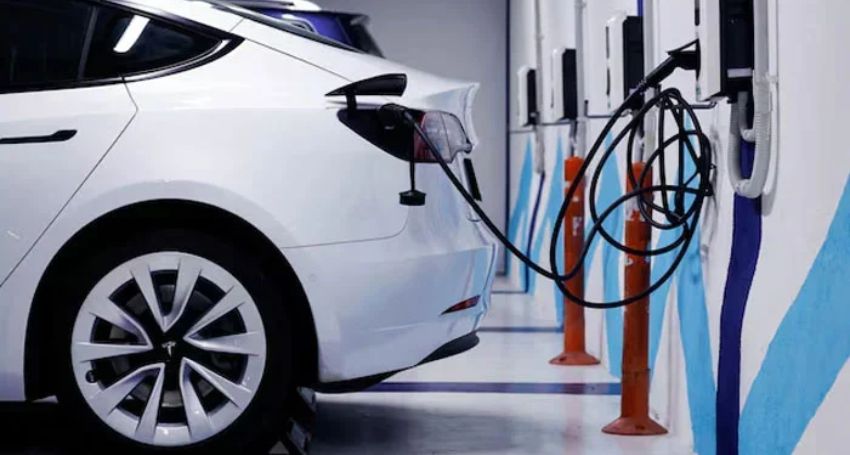
Wireless EV charging is transforming the way we think about EV charging. No more fumbling with cables, hunting for the nearest charging station, or waiting in line for your turn. With inductive charging technology, your electric car could soon charge wirelessly simply by parking over a charging pad. But how exactly does it work, and what does this mean for the future of EVs? This article unpacks everything you need to know about wireless charging, the role of WiTricity, and the growing shift in vehicle charging systems.
Whether you’re an EV owner, thinking about going electric, or just curious about wireless electricity, this guide will give you a complete understanding of how wireless EV charging works, its benefits, and limitations, and why it’s being called the future of wireless vehicle tech.
What Is Wireless EV Charging?
Wireless EV charging uses inductive technology to power up your electric vehicle without any plug-in required. Instead of connecting a charger via a cable, your EV charges by parking over a charging pad, which transfers electricity through a coil.
This process, known as electromagnetic induction, involves a coil in the charger transmitting energy via a magnetic field to a receiving coil in the vehicle. When aligned properly, charging begins automatically—no manual steps are needed. This hands-free method could redefine charging for EVs, especially in urban environments and smart cities.
How Does Magnetic Resonance Enable Wireless Charging?
Magnetic resonance is the core principle behind most wireless charging systems. Unlike simple inductive setups (used in smartphones), magnetic resonance allows for wireless electricity to flow across a greater distance and tolerate misalignment between the coils.
The charging pad emits a magnetic field using an oscillating current. When a compatible electric vehicle parks nearby, the coil inside the car picks up the field and converts it back into electrical energy to recharge the battery.
This technology ensures that wireless charging is practical for real-world applications like uneven surfaces, different vehicle sizes, and public charging infrastructure.
Is Wireless Charging Safe for Your Electric Car and Battery?
Yes—wireless charging is designed with safety in mind. The energy transferred through the magnetic field is non-ionizing and doesn’t interfere with electronics or human health.
Additionally, the charging system includes smart sensors that can detect foreign objects and shut off the charger if needed. That protects both the vehicle and the charging pad from damage.
From an automotive perspective, there’s also no exposure to the elements—so no corrosion from rain, snow, or road salt. This adds longevity to your charging equipment and may reduce servicing costs over time.
Wireless vs Wired Charging
When comparing wireless vs wired charging, convenience is a major factor. With wireless charging, you just park, and the system starts. With plug-in charging, you manually connect a cable every time.
However, charging efficiency is where differences emerge. Wireless charging is generally slightly less efficient, which means slower charging or more energy use overall. This is especially noticeable with lower-end charging systems, though WiTricity and others are working to narrow this gap.
Still, wireless charging offers less wear and tear on connectors and may result in longer-lasting components.
Can You Charge a Tesla Wirelessly?
As of now, Tesla does not offer factory-installed wireless charging. But that might change soon. In 2023, Tesla acquired a wireless charging company, showing serious intent to move in that direction.
Third-party providers like WiTricity already offer retrofit solutions that allow Tesla and other EVs to use wireless charging pads. These systems work well in garages, driveways, and private parking spots.
As charging technology evolves, it’s likely we’ll see wireless charging solutions for electric models from more brands—including Tesla—becoming standard.
Wireless Charging Vs Plug-in Charging
This is one of the biggest questions for consumers: how does charging efficiency compare? Modern wireless chargers from companies like WiTricity can reach up to 90–93% efficiency, which is on par with Level 2 plug-in systems. However, older or lower-quality setups may be less efficient, especially if there’s misalignment between the coils.
Important Considerations:
- Wireless systems require precise coil placement.
- Misalignment reduces efficiency and slows down the charging events.
- Wireless charging could be improved through smart positioning and software updates in future charging systems.
Where Are Wireless Charging Stations Being Installed?
The global charging industry is slowly but steadily rolling out wireless charging stations. Cities in the U.S., Europe, and Asia are piloting charging infrastructure projects that use wireless electricity for taxis, buses, and public EVs.
Examples:
- Electric buses in South Korea and Germany are already using charging pads embedded in roads.
- Universities and private companies are developing wireless charging stations for delivery vans and autonomous vehicles.
These charging solutions are part of the broader electrification and smart-city trends shaping urban transportation.
Future of Wireless Charging and EV Infrastructure
The future of wireless looks bright—especially for EV infrastructure. Companies and governments are investing in wireless energy and dynamic charging that works even while a car is moving.
Imagine roads with embedded charging pads that top off your battery while you drive. This could drastically reduce the size of battery packs needed, lower costs, and extend the lifespan of EVs.
As wireless charging technology matures, it’s expected to become a common part of the charging infrastructure, alongside fast plug-in charging stations and smart grids.
Is Wireless Charging Worth It for EV Owners Today?
For some EV owners, especially those with home garages, wireless EV charging is already a game-changer. It eliminates the daily hassle of handling a cable, adds convenience, and reduces maintenance.
However, the tech is still relatively new and comes at a premium. Not all cars are compatible, and installation of a charging pad may require professional help.
Still, as more charging offers emerge and interest in wireless charging grows, the costs are likely to drop—making it a more practical choice for the average driver.
Conclusion
Wireless EV charging is no longer just a concept—it’s a rapidly evolving reality that’s reshaping how we think about powering electric vehicles. With innovations and real-world installations gaining momentum, the convenience and potential of wireless charging are hard to ignore. As the technology becomes more accessible, it’s poised to play a key role in the electrified future of transportation.
Want to stay ahead of the curve in EV tech and charging solutions? Contact us for the latest news, expert insights, and updates on everything driving the future of electric mobility. Don’t miss your chance to stay charged—in more ways than one.



